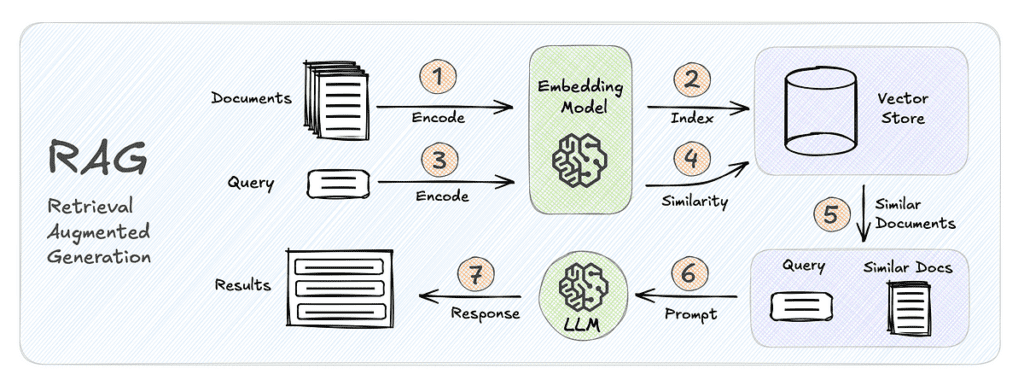Essential Metrics and Methods to Enhance Performance Across Retrieval, Generation, and End-to-End Pipelines
Introduction
Generative AI has truly transformed the way we interact with technology, and one of the standout innovations in this space is Retrieval-Augmented Generation (RAG). Picture this: Instead of sifting through countless keyword-based search results to find relevant information, you can now access a well-rounded, contextually rich answer, thanks to the power of RAG. This model combines traditional information retrieval with generation techniques, taking AI a step further in producing meaningful responses.
Imagine you’ve got a question—perhaps you’re curious about the history of the iconic Golden Gate Bridge. Instead of just finding a list of links or paragraphs, RAG will retrieve pertinent documents and seamlessly create a cohesive answer that captures the essence of your inquiry.
How Does RAG Work?
Let’s break it down. When you input a query, it undergoes a process akin to a matchmaking service. Here’s a simple overview of the two main steps involved in RAG:
-
Retrieval Step: Your query is embedded into a vector that allows the system to find similar documents stored in a specialized vector store. Think of this as a highly organized digital library, where each book is not just located by title but by its relevance to your interests.
- Generative Step: Once relevant documents are identified, this information is synthesized to create a tailored response. It’s like having an expert summarizing the most important points just for you!
The Importance of Metrics
In the world of RAG, just like in any tech-driven environment, performance metrics play a crucial role. Whether it’s ensuring that the retrieval is swift and relevant or that the responses generated are accurate and informative, tracking these metrics helps refine the system continuously. Here are some critical metrics to focus on:
- Retrieval Accuracy: Measures how often the system retrieves relevant documents.
- Response Quality: Assesses how informative and contextually appropriate the generated answers are.
- Response Time: Evaluates the speed at which a response is generated post-retrieval.
Engaging Your Audience
Imagine using this technology while planning a weekend adventure in San Francisco. You could ask, "What are the top things to do in San Francisco next weekend?" Instead of stumbling upon a list of activities, RAG could present you with a personalized itinerary, incorporating local events, popular landmarks, and even tips from locals.
By embedding ourselves in real-life scenarios like this, we can appreciate the transformative potential of RAG in everyday decision-making.
Unique Perspectives
From my experience, one of the most exciting aspects of RAG is its ability to provide a synthesis of vast information within seconds. As technology evolves, I see RAG not just as a tool, but as a companion in our quest for knowledge. It promises to bridge the gap between raw data and human understanding, making information more accessible to everyone.
Conclusion
In summary, Retrieval-Augmented Generation represents a significant leap in how we access and utilize information. By marrying retrieval processes with generative capabilities, RAG enhances our capacity to receive tailored responses to our questions. The combination of accuracy, quality, and speed ensures that users can efficiently navigate the wealth of knowledge available.
The AI Buzz Hub team is excited to see where these breakthroughs take us. Want to stay in the loop on all things AI? Subscribe to our newsletter or share this article with your fellow enthusiasts.




